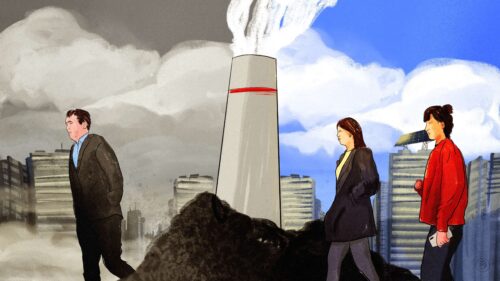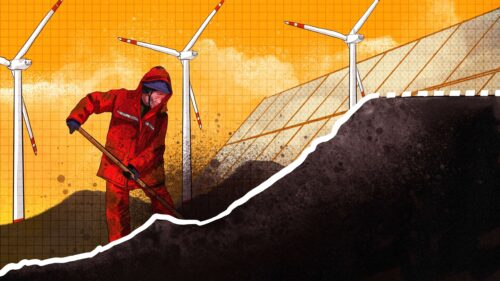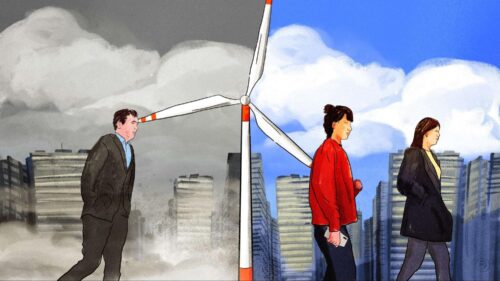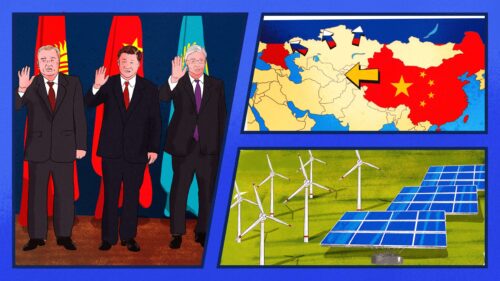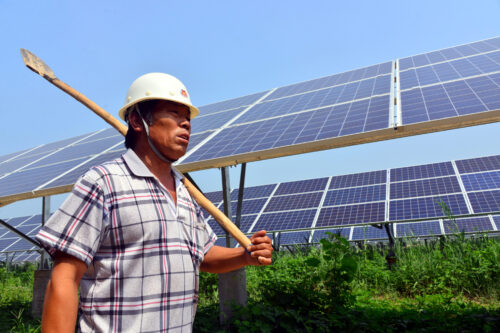A brief guide to China’s complicated green hydrogen industry
Made without any carbon emissions, green hydrogen can play an important role in cleaning up dirty industries like coal and steel. Beijing’s hands-off approach has motivated local governments, SOEs, and the private sector to take the reins, but results so far are mixed.
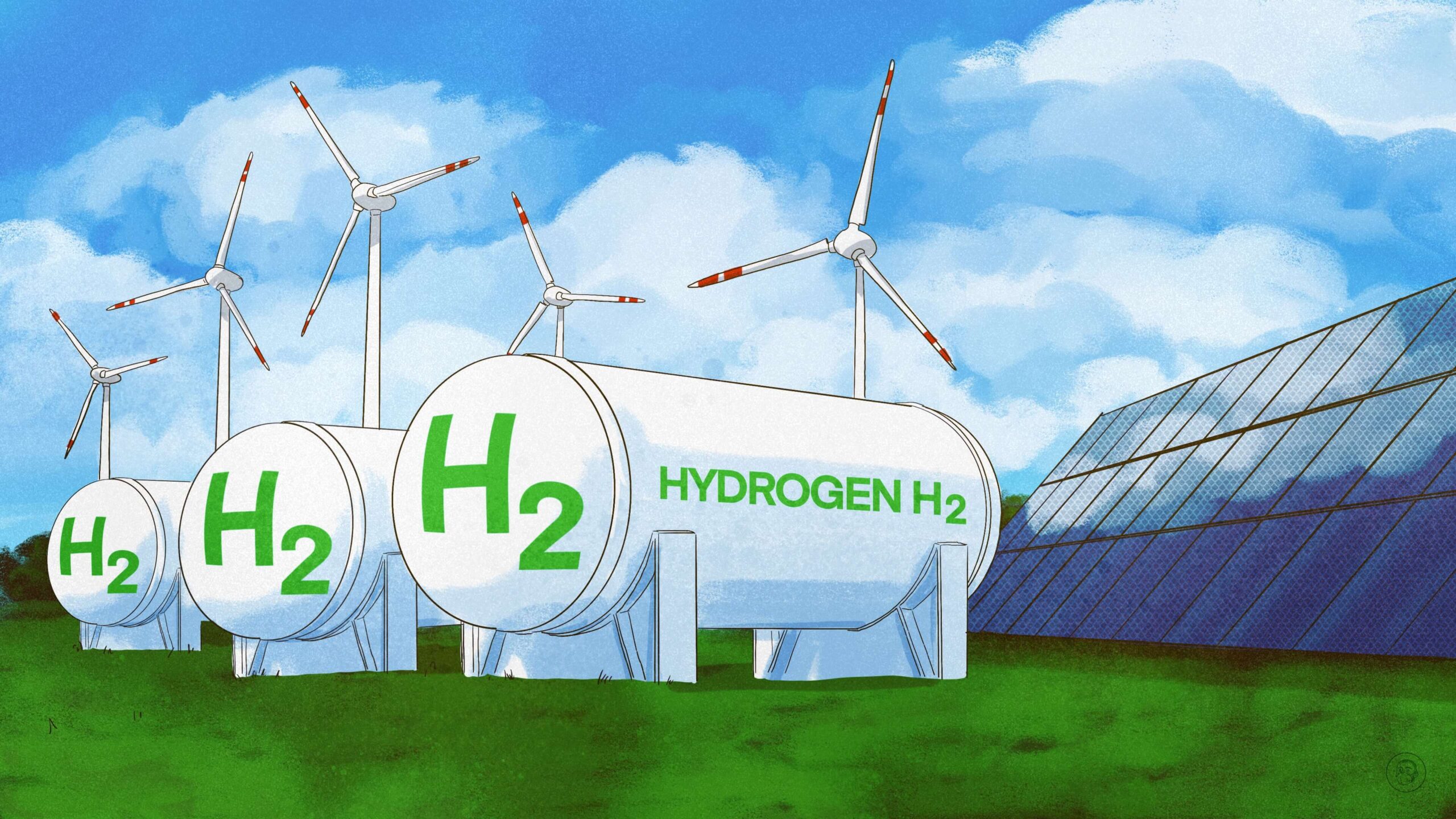
China currently accounts for over half of global steel production, and steelmaking factories are one of China’s biggest and dirtiest industries. Steel plants emit about 1.8 billion tons of carbon per year, second only to thermal power plants, which release more than 7 billion tons annually. Hydrogen could be used as a substitute for coke in the traditional steelmaking process. Depending on how the hydrogen is produced, this could completely eliminate carbon dioxide as a byproduct. Hydrogen’s combustibility and emissions-free nature also make it an ideal fuel for long-haul and marine transportation.
Gray vs. green hydrogen
China is the world’s largest producer of hydrogen, generating 33 million tonnes a year, nearly three times more than the second-largest producer, the United States. Yet most of China’s hydrogen output is powered by burning coal and natural gas, a process that emits carbon dioxide, yielding so-called “gray hydrogen.”
The race is on to produce “green hydrogen” by splitting water into hydrogen and oxygen using an electrochemical cell called an electrolyzer. The U.S. and the European Union have set generous subsidies for this water electrolysis production of green hydrogen that gives off zero dirty emissions, and both are aiming for ambitious consumption goals of 10 million metric tonnes and 20 million metric tonnes by 2030, respectively.
China’s central government has set goals, too, but much less ambitious ones. In March, the National Development and Reform Commission said that the country would try to produce up to 200,000 tonnes of green hydrogen per year and have about 50,000 hydrogen-fueled vehicles on the roads by 2025.
Even given the potential for exponential growth in the second half of this decade, the Chinese central government’s push for green hydrogen is not comparable with the early days of the electric vehicle (EV) battery market, when targeted subsidies for battery makers such as CATL created industry leaders.
“The central government’s push behind green hydrogen isn’t as strong as it was for batteries, partially because hydrogen has been around, and the central government would be more inclined to let the market determine the leader,” Cory Combs, the associate director of the policy consultancy Trivium China, told The China Project.
After Beijing set the national goal for green hydrogen production, local governments, companies, and state-owned enterprises felt pressure to help China meet its emissions reductions goals and feared penalties, in the form of export tariffs, for continuing to emit CO2. Thus they set their own, more ambitious goals, whose total will exceed 1.2 million metric tons per year.
Chicken and egg problem
Because green hydrogen is still expensive and in short supply, government subsidies that help lower costs and increase availability could increase consumption. As it struggles to grow, the green hydrogen industry is faced with answering where government money should go: to production or end-use applications?
“The current development of green hydrogen in China has mostly been a decentralized effort led by local governments,” Combs said. Nearly all provinces and regions in China have incorporated hydrogen into their growth strategies, with over 120 green hydrogen projects currently in progress.
Local governments are exploring different pathways for the regional adoption of green hydrogen. Xinjiang and Inner Mongolia lead green hydrogen production thanks to their inexpensive solar and wind power. Other initiatives designed to build up the number of China’s green hydrogen users include the hydrogen fuel cell vehicle demonstration programs in Beijing, Tianjin, Hebei, Shanghai, Guangdong, Hebei, and Henan, and the Shandong government’s “Hydrogen into 10,000 homes” program.
Seeking a profit model
The cost of producing green hydrogen is more than twice that of gray hydrogen. “There is just not enough premium for green hydrogen compared with gray hydrogen,” Combs said. That’s no good for decarbonization as both products, he said, “are basically the same for end-users.”
As the Chinese government plans to reach peak carbon use by 2030 and become carbon neutral by 2060, heavy industries are under pressure to aid in green hydrogen production. Further pressure to go green with hydrogen comes from the increasingly stringent EU import requirements, the Carbon Border Adjustment Mechanism (CBAM), which could impose substantial tariffs on China’s high-emitting export products such as iron and steel.
China news, weekly.
Sign up for The China Project’s weekly newsletter, our free roundup of the most important China stories.
Making electrolyzers cheap
Large-scale green hydrogen projects present China’s state-owned enterprises with a chance to advance the green economy by facilitating the production of electrolyzers upstream, and optimizing the use of other renewable energy sources.
As 70% of green hydrogen production is reliant upon green electricity, China’s green hydrogen projects are concentrated in the northwest, where solar and wind power abound. In February 2023, China’s largest oil company, the wholly state-owned Sinopec, launched a 30,000-metric-ton green hydrogen demonstration project in Inner Mongolia, with a plan to build a 400-kilometer (248-mile) pipeline to transport hydrogen to Beijing.
Sinopec also built the world’s largest solar-to-hydrogen project, the Kuqa Green Hydrogen Demonstration Project, which came online in June 2023 in Kuqa City in northwestern China’s Xinjiang Uyghur Autonomous Region. The plant produces 20,000 tons of green hydrogen annually, at the relatively cheap cost of roughly 18 yuan/kg ($2.5/kg). The green hydrogen produced in Kuqa is used to replace the gray hydrogen Sinopec uses to refine oil in northeastern China in Tahe, Heilongjiang Province.
The solar connection
Before Sinopec launched the Kuqa project, China’s total demand for a certain type of electrolyzer was under 30 units. Kuqa alone required 52 units, some of which are supplied by LONGi, one of China’s biggest solar energy companies.
Chinese solar energy giants play an active role in manufacturing the electrolyzers used in making green hydrogen. LONGi plans to raise production of electrolyzers to 5 GW per year by 2025, up from its current capacity of 1.5 GW. This means that the electrolyzers they produce would have the capacity to operate using 5 GW of electrical power. This would put LONGi’s production capacity on par with that of the whole of the EU, where the 2024 target is 6 GW worth of renewable hydrogen electrolyzers.
Solar companies’ strong presence in the green hydrogen space aids industry integration. Green hydrogen is commonly generated by renewable energy such as solar, and the production of polysilicon for solar cells is usually powered by hydrogen.
Sungrow Power, a Chinese maker of solar inverters that convert the direct current electricity generated by solar panels to the alternating current electricity used by the electrical grid, has the capacity to produce 1.1 GW of green hydrogen each year, the world’s third-largest producer.
But where private companies make “asset-light investments, such as electrolyzers,” Tang Xueqi, a green hydrogen analyst at Guojin Securities, told The China Project that “state-owned enterprises are better positioned for developing green hydrogen production projects and dealing with grid interconnection issues.”
LONGi’s slow development of downstream applications such as fuel cell batteries and hydrogen production is due to the absence of a clear direction indicating the most promising opportunities, the company told Bloomberg in 2021.
Waiting for a champion
The green hydrogen economy needs collaborative efforts to establish a comprehensive ecosystem encompassing generation, storage, transmission, and transportation. Traditional solar, wind, and chemical manufacturers are positioned to steer the growth of green hydrogen.
Companies with robust financial support, such as LONGi, are apt to invest in capital-intensive research and development of the electrolyzers. Some lesser-known players such as Peric Hydrogen Technologies are ahead in the game with their innovations in electrolyzers.
“It may be hard for new entrants to get into businesses like electrolyzers, where it has been quite crowded,” Tang said. “But who knows, there might yet be another CATL making hydrogen fuel cell batteries.”
Companies:
- CATL
- LONGi
- Sungrow Power
- Trina Hydrogen 天合元氢
- Sinopec
- Peric Hydrogen Technologies 中船(邯郸)派瑞氢能科技
Links and sources:
- LONGi Hydrogen wins in the world’s largest Green Hydrogen Project / LONGi
- Fact Sheets on the European Union – Renewable Energy / Europarl
- Chinese companies take top three slots in BNEF’s list of world’s 20 largest hydrogen electrolyser makers / HydrogenInsight
- Trina Hydrogen Released its first 1,000 Nm3/h ALK Hydrogen Production Equipment / FuelCellChina
- China’s Solar Giants Make a Bid to Dominate Hydrogen Power / Bloomberg
- Sinopec Xinjiang Kuqa Green Hydrogen Pilot Project Enters Operation, Leading China’s Green Hydrogen Development / Sinopec Group
- 目前全球在建最大绿氢项目——新疆库车绿氢示范项目年底投产,成本18元/公斤 / Shihuazhihui
- 我国首个万吨级光伏制氢项目投产 / Xinhua
- China sets green hydrogen target for 2025, eyes widespread use / Reuters

